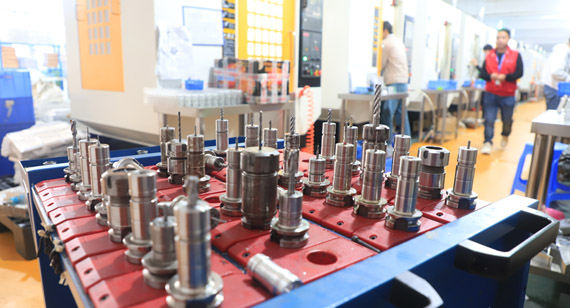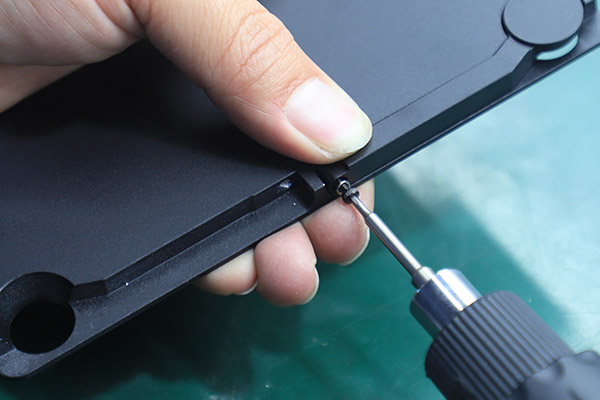15 years one-stop China custom CNC machining parts factory

Hey there I’m VMT Sam!
With 25 years of CNC machining experience we are committed to helping clients overcome 10000 complex part-processing challenges all to contribute to a better life through intelligent manufacturing. Contact us now
 146 |
Published by VMT at Dec 30 2023
146 |
Published by VMT at Dec 30 2023
Analysis and Solutions to the Causes of Abnormal Noise After CNC Machining and Assembly of Aluminum Alloy Precision Parts
CNC machining is a high-precision, high-efficiency machining method that is widely used in the manufacturing of various precision parts. However, during the CNC machining and assembly process of aluminum alloy precision parts, abnormal noise problems sometimes occur, which not only affects the smooth progress of the machining process, but may also have a negative impact on the accuracy and performance of the parts. This article will explore the causes of abnormal noise after CNC machining and assembly of aluminum alloy precision parts, and propose corresponding solutions.

1. Analysis of the Causes of Abnormal Noise
Equipment Factors
(1) Spindle problem: As a key component in CNC machining, the spindle's rotation accuracy has a direct impact on the machining quality of parts. If the bearing of the spindle is poorly lubricated, the bearing clearance is too large, or the bearing is damaged, abnormal noise will occur during rotation.
(2) Transmission system issues: The transmission system in CNC machining includes screws, guide rails and other components. If these parts have problems such as wear, looseness or excessive accuracy, abnormal noise will occur.
Tool Factor
(1) Tool installation problems: Insufficient tool installation or improper tool clamping may cause abnormal noise during machining.
(2) Tool wear: The tool is worn during the machining process, especially the severe friction with the workpiece during the cutting process, which will cause abnormal noise.

Artifact Factors
(1) Workpiece clamping problems: Insecure workpiece clamping or poor positioning accuracy may cause the workpiece to move or vibrate during machining, resulting in abnormal noise.
(2) Workpiece material problem: Aluminum alloy materials are prone to produce cutting chips during machining. If a large amount of chips accumulate on the tool or machine tool components, abnormal noise will occur.
Envirnmental Factor
(1) Temperature changes: Temperature changes may cause thermal expansion and contraction of various parts of the machine tool, affecting its accuracy and causing abnormal noise.
(2) Humidity and cleanliness: Humidity and cleanliness in the working environment have a certain impact on the stable operation of machine tools. Excessive humidity may cause the equipment to rust, and poor cleanliness may allow impurities such as cutting chips to enter the moving parts of the machine tool, causing abnormal noise.
2. Solution
To address the above causes of abnormal noise, the following solutions can be taken:
Equipment Maintenance and Upkeep
(1) Regularly check the lubrication condition of the spindle bearing to ensure good lubrication and prevent bearing damage. At the same time, the spindle bearing clearance is regularly adjusted to maintain rotation accuracy.
(2) Regularly inspect and maintain the screws, guide rails and other components in the transmission system. If they are worn or loose, they should be replaced or adjusted in time. Keeping the transmission system in good operating condition can help reduce the likelihood of abnormal noise.
Tool Management
(1) Choose tools rationally and select appropriate tool materials and specifications according to machining needs. At the same time, ensure that the tool is installed firmly to prevent loosening during machining.
(2) Check the tool wear regularly and replace seriously worn tools promptly to avoid abnormal noise caused by excessive tool wear. In addition, keeping the tool in good sharpening condition can help reduce vibration and abnormal noise during cutting.
Workpiece Quality Control
(1) Strengthen the quality control of workpiece clamping to ensure that the workpiece is firmly clamped and has high positioning accuracy. Use appropriate fixtures and clamping methods to reduce vibration and movement during machining, thereby reducing the occurrence of abnormal noise.
(2) Optimize machining parameters and cutting conditions, and select appropriate cutting speed, feed rate, cutting depth and other parameters to reduce vibration and noise during the cutting process. At the same time, clean the cutting chips on the machine tool regularly to keep the machine tool components clean.
Environmental Control
(1) Control temperature changes in the working environment and maintain a stable temperature environment to reduce changes in the accuracy of machine tool components caused by thermal expansion and contraction.
(2) Improve the humidity and cleanliness of the working environment, maintain appropriate humidity to prevent equipment from rusting, and clean the machine tool and its surrounding environment regularly to prevent impurities such as cutting chips from entering the moving parts of the machine tool and causing abnormal noise.

3. Preventive Measures
In order to prevent abnormal noise from aluminum alloy precision parts after CNC machining and assembly, in addition to the above solutions, the following preventive measures can also be taken:
Develop and implement regular maintenance and upkeep plans, including inspection and adjustment of spindle bearings, transmission systems, cutting tools, etc., to ensure that the equipment is always in good working condition.
Conduct regular training for operators to improve their understanding and skill level of equipment performance, machining parameters and tool management to ensure the smooth progress of the machining process.
Establish a complete quality control system to strictly monitor the clamping, positioning and machining of workpieces to ensure stable and reliable machining quality.
Optimize the machining process and parameter selection, and select appropriate cutting speed, feed rate, cutting depth and other parameters according to different materials and machining needs to reduce the probability of abnormal noise.
Create a good working environment, keep the work area clean and orderly, and avoid the occurrence of equipment accuracy decline or abnormal noise caused by environmental factors.
4. Summary
Abnormal noise after CNC machining and assembly of aluminum alloy precision parts is a complex problem, involving many aspects such as equipment, cutting tools, workpieces and environment. In order to solve this problem, it is necessary to conduct an in-depth analysis of the causes of abnormal noise and take corresponding solutions and preventive measures. Through the comprehensive application of measures such as strengthening equipment maintenance and upkeep, optimizing machining parameters and processes, improving operator skill levels, and creating a good working environment, the probability of abnormal noise after CNC machining and assembly of aluminum alloy precision parts can be effectively reduced and the machining quality improved. and efficiency.
Ready To Start Your Next Project?
Get Instant Quote

Request a Free Quote
Send us a message if you have any questions or request a quote. We will get back to you ASAP!